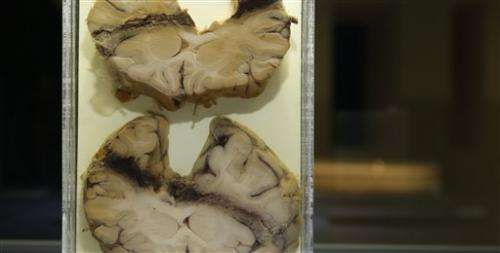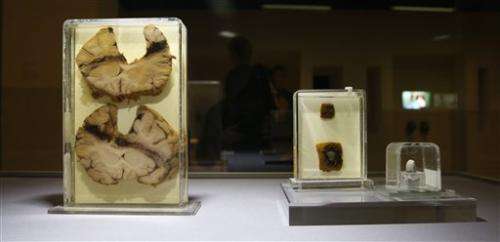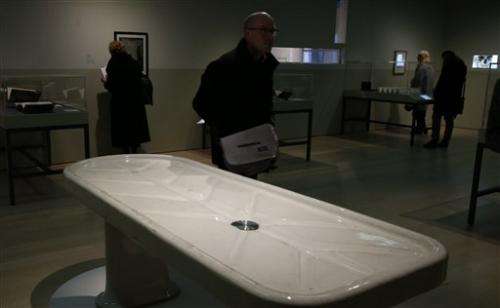Forensics exhibition shows how science can make dead speak

(AP)—For all of us, death is the end. For forensic scientists, it's also a beginning.
An exhibition at London's Wellcome Collection journeys through the afterlife of violent death, from crime scene to mortuary, laboratory and courtroom.
It's a world we think we know from movies and TV dramas. But curator Lucy Shanahan said Tuesday that the exhibition's aim is to show the "real lives and personal narratives at the heart of forensics."
The Wellcome's mission is to explore the ways in which art, medicine and science overlap, and the exhibition mixes real-life—and real-death—artifacts with artworks inspired by related themes.
It tracks key developments in forensic science, including the first police crime lab established in Lyon, France in 1910 by Edmond Locard, who developed the key principle that "every contact leaves a trace." Later breakthroughs include fingerprint identification and DNA analysis.
Exhibits include a drawing of a victim of Jack the Ripper as she appeared in the morgue and a display showing how blowfly larvae helped convict a famous 1930s killer.
The artworks on display are both beautiful and as chilling as mortuary fridge. Sally Mann's photo from the University of Tennessee's "body farm," where scientists study decaying corpses, is a grisly variation on classical depictions of the human body.
Mexican artist Teresa Margolles, a former mortuary worker, has preserved a slab of floor tile on which a friend was murdered, while Bosnian artist Sejla Kameric screens images of victims of the Balkan wars inside a refrigerated morgue van.

Sometimes, art and science blur. A slice of brain from a suicide victim is as beautiful as a floral painting. A ceramic 1920s mortuary slab is made by Royal Doulton, renowned for fine chinaware.
The show ends with portraits of people who were wrongfully convicted and later exonerated through DNA evidence.

"We wanted to be able to tell both sides of the story," Shanahan said. "The point that we're making is that if the science is used in the right way, these kinds of situations can be prevented."
"Forensics: Anatomy of a Crime" opens Thursday and runs to June 21.
© 2015 The Associated Press. All rights reserved.


















